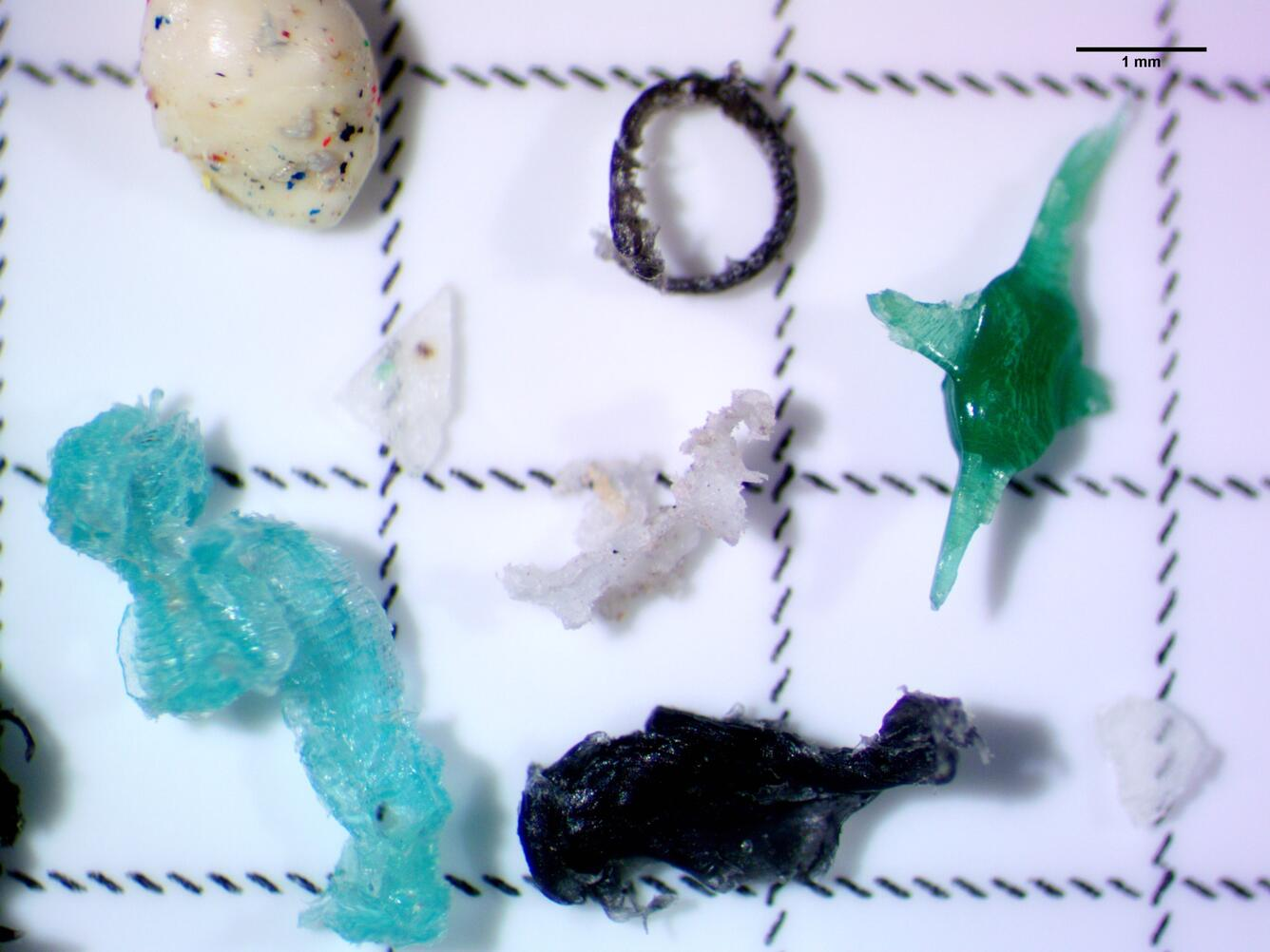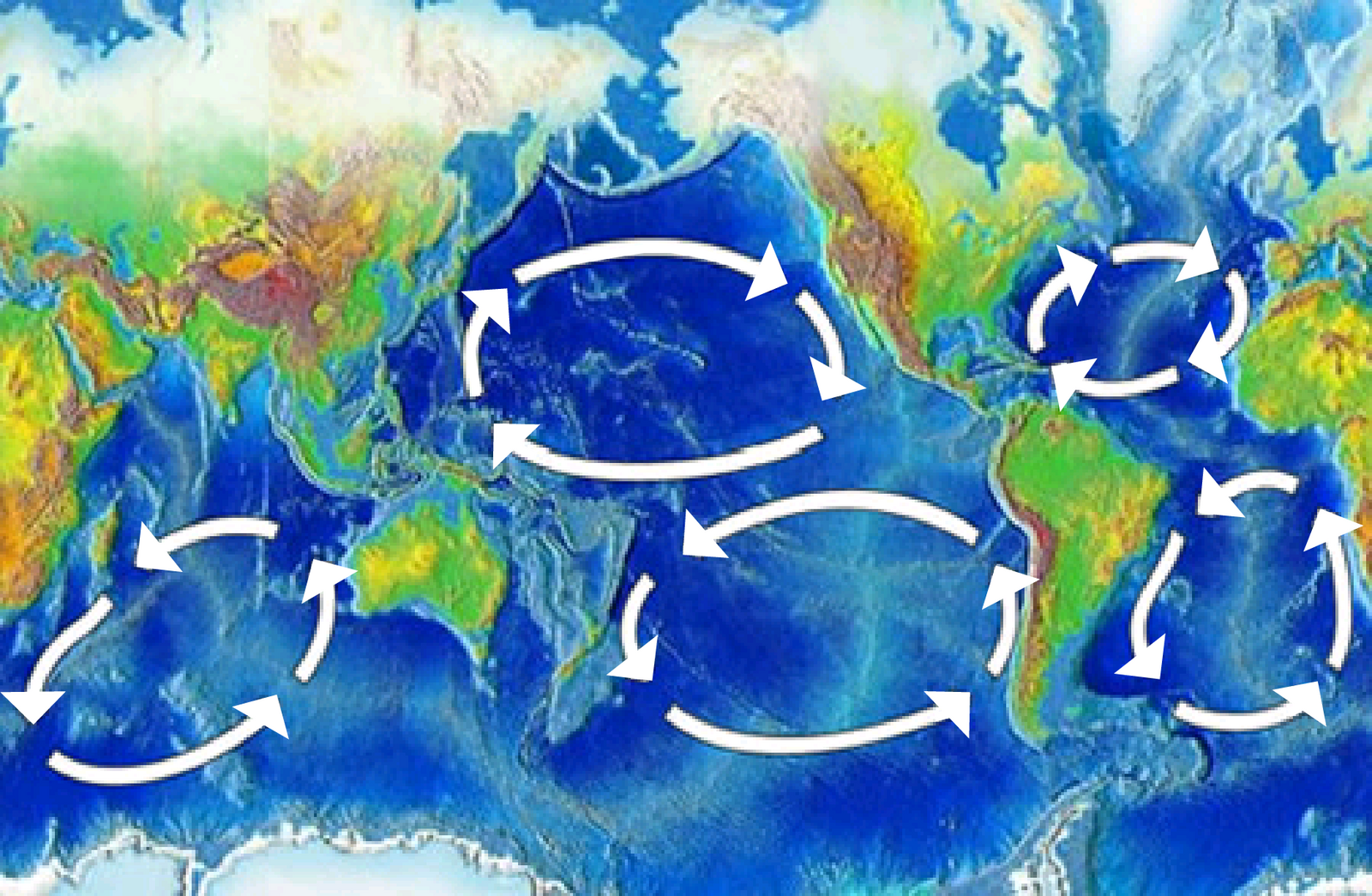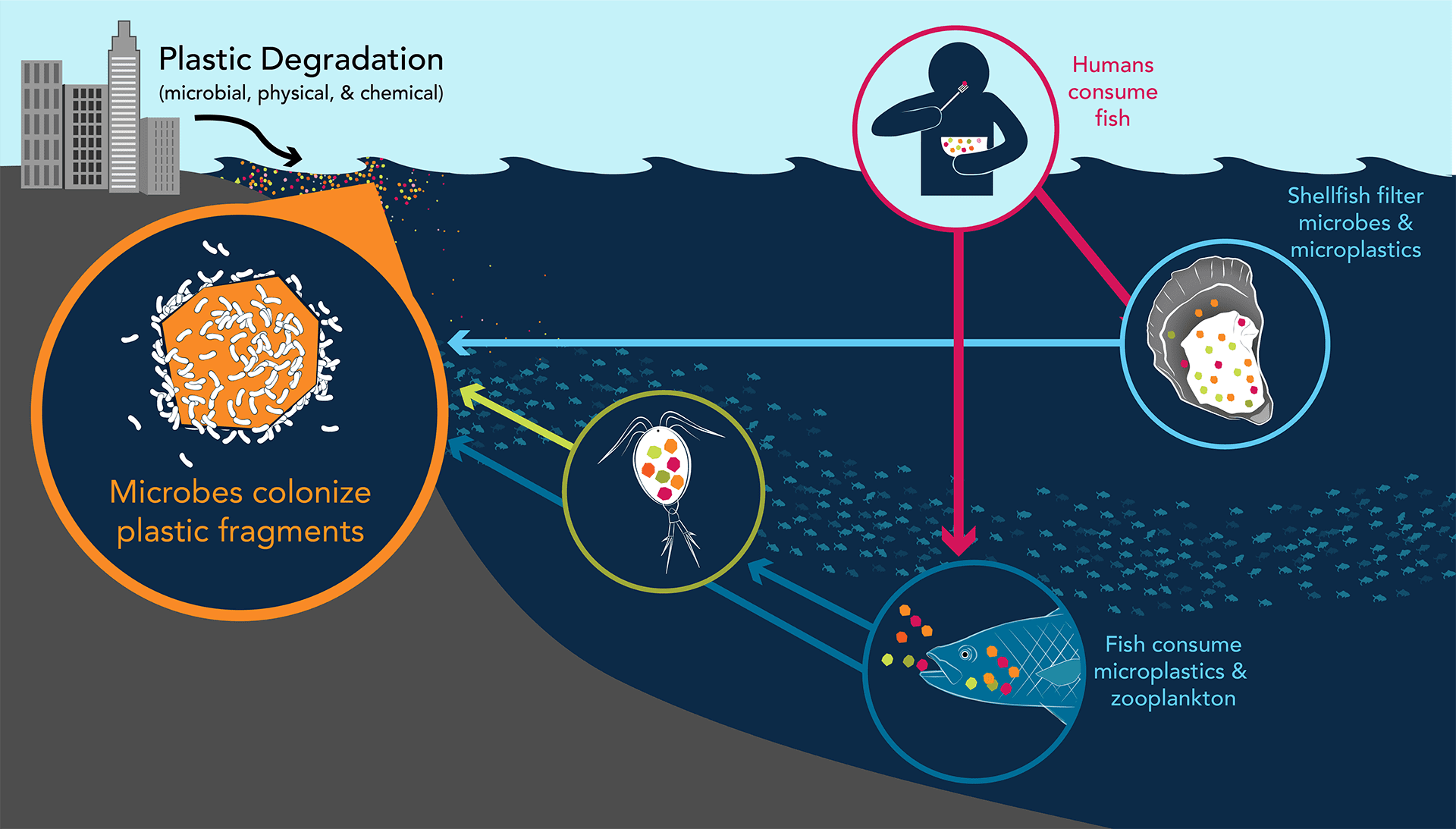IB Syllabus focus:
‘Plastic debris accumulates in gyres; microplastics enter food webs, concentrate toxins and harm organisms. Management must cut inputs and remediate existing pollution.’
Plastics and microplastics are now widespread environmental pollutants, affecting oceans, rivers, and lakes worldwide. Their persistence, toxicity, and bioaccumulation make them a critical global sustainability challenge.
Understanding Plastics
Plastics are synthetic polymers derived mainly from petrochemicals. They are valued for their durability and low cost, but these same qualities make them resistant to natural degradation.
Characteristics of Plastics
Durable and lightweight — plastics do not easily decompose.
Persistent pollutants — they can remain in ecosystems for centuries.
Versatile — used in packaging, construction, textiles, and countless products.
Plastic Pollution: The accumulation of synthetic plastic materials in the environment, which persist and cause harmful impacts on ecosystems and organisms.
Because they degrade slowly, plastics often fragment into smaller particles, leading to the formation of microplastics.
Microplastics
Microplastics are defined as plastic particles less than 5 mm in diameter. They form through both intentional manufacturing and the breakdown of larger plastics.

Caption: Photomicrograph of diverse microplastic fragments on a gridded background, highlighting irregular shapes and colours typical of particles produced by weathering and abrasion. The 1 mm scale bar emphasises how readily such fragments can be ingested by plankton and small fish. Source.
Sources of Microplastics
Primary microplastics: manufactured at small sizes (e.g., microbeads in cosmetics, pellets used in industrial processes).
Secondary microplastics: produced when larger plastics fragment due to UV radiation, abrasion, or weathering.
Microplastics: Plastic fragments smaller than 5 mm, originating from either primary manufacturing or secondary breakdown of larger plastic debris.
Ocean Gyres and Plastic Accumulation
Plastics often accumulate in ocean gyres, which are large systems of circulating currents. The best-known example is the Great Pacific Garbage Patch.

Labeled map of the five major ocean gyres and associated boundary currents, illustrating how circulating currents create accumulation zones for floating plastic debris. This visual contextualises why large garbage patches persist within gyre centres. Source.
Why Gyres Trap Plastics
Circular currents concentrate floating debris.
Low rates of outflow mean plastics remain trapped for decades.
Lightweight plastics float, allowing them to drift long distances.
This creates hotspots of plastic pollution, with dense accumulations of debris at the ocean’s surface and throughout the water column.
Entry into Food Webs
Microplastics infiltrate ecosystems by being ingested by organisms at multiple trophic levels.
Pathways
Zooplankton consume microplastics mistaken for food.
Small fish ingest contaminated plankton.
Predators, including humans, absorb plastics higher in the food chain.
The small size of microplastics allows them to move across trophic levels, a process known as bioaccumulation.

Illustration of microplastics entering marine food webs via zooplankton, fish and shellfish, culminating in human exposure through seafood consumption. The figure also shows microbes colonising plastic fragments, which exceeds the core syllabus detail but helps explain transport of adsorbed toxins. Source.
Bioaccumulation: The gradual build-up of substances, such as plastics or toxins, within an organism over time, often through ingestion or absorption.
Toxin Concentration
Microplastics are harmful not only because of their physical presence but also because they concentrate toxins.
Mechanisms
Plastics absorb persistent organic pollutants (POPs) such as DDT or PCBs.
Toxins adhere to plastic surfaces and are released upon ingestion.
Accumulated toxins weaken immune systems and disrupt reproduction.
The dual impact of physical blockage and chemical toxicity amplifies ecological risks.
Ecological and Organismal Impacts
The presence of plastics and microplastics causes direct and indirect harm to aquatic and terrestrial life.
Physical Effects
Blockage of digestive systems.
False satiation leading to malnutrition.
Reduced reproductive success.
Chemical Effects
Hormonal disruption from plastic additives.
Transfer of heavy metals and organic pollutants.
Altered growth and survival rates in fish, birds, and mammals.
Human Health Concerns
Microplastics have been detected in seafood, drinking water, and even the atmosphere. Their impacts on human health are still under study but raise serious concerns.
Potential Risks
Respiratory issues from inhaled microfibres.
Gastrointestinal inflammation from ingested particles.
Unknown long-term effects from toxin exposure.
Management Strategies
The IB syllabus highlights the urgent need to cut inputs of plastics and remediate existing pollution.
Cutting Inputs
Reducing plastic production and use through bans on single-use plastics.
Improving waste management with recycling and circular economy strategies.
Public awareness campaigns encouraging alternatives to plastic.
Remediation of Existing Pollution
Cleanup operations targeting rivers, beaches, and gyres.
Bioremediation research exploring microbes capable of breaking down plastics.
Technological solutions, such as ocean cleanup devices and filtration systems.
Remediation: The action of reversing or stopping environmental damage by removing, neutralising, or containing pollutants.
Between preventative measures and remediation, global collaboration is necessary to address this transboundary challenge.
Summary Points for Students
Plastics persist and fragment into microplastics.
Gyres act as accumulation zones.
Microplastics enter food webs, leading to bioaccumulation.
They concentrate toxins, amplifying ecological harm.
Impacts span from aquatic ecosystems to human health.
Management requires both prevention and cleanup.
FAQ
The most common polymers identified in microplastics are polyethylene (PE), polypropylene (PP), and polystyrene (PS). These are widely used in packaging, bottles, and disposable items.
Their low density means many fragments float and disperse easily in water, making them highly mobile. Denser plastics, such as polyethylene terephthalate (PET), are also present but tend to sink and accumulate in sediments.
Synthetic textiles such as polyester, nylon, and acrylic shed microscopic fibres during washing.
Each wash can release thousands of fibres.
Wastewater treatment plants often fail to capture all of them.
These fibres then flow into rivers and seas, contributing significantly to global microplastic loads.
This source is particularly linked to urban environments with high use of synthetic fabrics.
Microplastics are easily ingested by a wide range of organisms because of their small size. Unlike larger debris, they penetrate at the base of food chains.
They also have a much greater surface-area-to-volume ratio, allowing them to absorb and transport pollutants more efficiently. This makes them both a physical and chemical hazard at microscopic levels.
Yes, but patterns differ. In rivers and lakes, microplastics:
Often originate from urban runoff, wastewater, and tyre wear.
Settle more quickly into sediments due to slower currents.
Influence benthic invertebrates and fish, disrupting local food webs.
While accumulation zones in freshwater are smaller than gyres, the ecological effects can still be severe.
Researchers use a combination of sampling and analytical methods.
Water samples are filtered to collect particles below 5 mm.
Microscopy identifies particle shape and size.
Spectroscopy (FTIR or Raman) determines polymer type.
This process helps distinguish plastics from natural materials such as sand or organic matter, allowing accurate assessments of environmental impact.
Practice Questions
Question 1 (2 marks)
State two ways in which microplastics enter aquatic food webs.
Mark scheme
Zooplankton ingest microplastics mistaken for food (1).
Small fish eat plankton already containing microplastics (1).
Shellfish filter microplastics directly from water (1).
(Maximum 2 marks. Award any two correct pathways.)
Question 2 (5 marks)
Explain how the accumulation of plastics and microplastics in ocean gyres can affect both ecosystems and human health.
Mark scheme
Plastics accumulate in gyres due to circulating ocean currents (1).
Microplastics ingested by organisms at lower trophic levels (e.g., zooplankton) move through the food web (bioaccumulation) (1).
Physical impacts on organisms include digestive blockage, malnutrition, and reduced reproductive success (1).
Chemical impacts arise as plastics concentrate toxins such as POPs or heavy metals, which are then released when ingested (1).
Human health risks include exposure through seafood consumption, with possible gastrointestinal inflammation or toxin-related health effects (1).
(Maximum 5 marks. Award one mark for each valid, clearly explained point.)

